What are the five types of conjunction in English?

This is the second of three chapters about Conjunctions. To complete this reader, read each chapter carefully and then unlock and complete our materials to check your understanding.
– Review the five types of conjunction in English and one conjunctive adverb
– Explore each of the six conjunctive types in turn by studying example forms and functions
– Complete worksheets to check knowledge and progress and to improve English ability
Before you begin reading...
-
video and audio texts
-
knowledge checks and quizzes
-
skills practices, tasks and assignments
Chapter 2

Welcome to Chapter 2 of our short reader on the use of conjunctions in academic English. Having already discussed in Chapter 1 how conjunctions are able to join words, phrases and clauses and indicate meaning relationships such as comparison, causality and condition, in this next chapter we look at the five true categories of conjunction in detail before finally discussing a sixth type, the conjunctive adverb. We provide EAP students with a list of examples for each of these six categories and explore their function, meaning and grammar in turn, using academic expressions wherever possible.
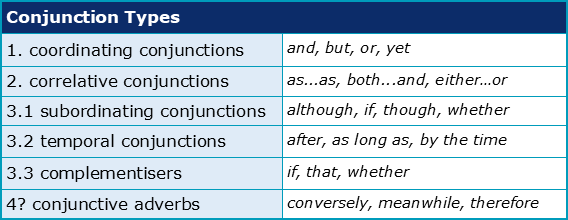
Type 1: Coordinating Conjunctions
The first type, coordinating conjunctions, have slightly different meanings and are used to join words, phrases and clauses of equal importance. Though there are only seven such conjunctions to learn, the mnemonic ‘FANBOYS’ may still help:
FOR – used to offer explanation, reason, purpose and rationale
‘The experiment will not be a failure, for the variables have been carefully checked.’
AND – used to join together two non-contrasting items or ideas
‘Air pollution is increasing globally, and health conditions are increasing too.’
NOR – used to join together two non-contrasting negative items or ideas
‘Governments are not investing enough, nor are they publicising the issue sufficiently.’
BUT – used to show exception or contrast
‘Numerous studies have been conducted into this issue, but none of them have been conclusive.’
OR – used to present a choice or an alternative idea
‘Governments can either invest more money into it, or the rates can continue to increase.’
YET – used to present an exception or contrast to a previous idea
‘Governments continue to invest millions into the issue, yet there is little improvement.’
SO – used to offer a consequence, an effect or a result
‘The experiment was conducted three times so the results could be confirmed.’
What you may have noticed in these examples is that the clauses which have been joined with coordinating conjunctions and commas (,) are independent in type. As we will see with Type 3, independent clauses can be distinguished from dependent clauses in that they are able to form grammatical sentences when expressed alone.
Type 2: Correlative Conjunctions
Like coordinating conjunctions, correlatives join words, phrases and clauses which are of equal important in an expression. How they differ, however, is that correlative conjunctions are formed of word or phrase pairs, such as in the table below:



Type 3.1: Subordinating Conjunctions
The most complex category is the subordinating conjunction, which is expressed through words such as ‘although’, ‘because’ and ‘while’. Where coordinating conjunctions such as ‘and’ and ‘but’ join words, phrases and independent clauses, subordinating conjunctions may join dependent clauses only, either to independent clauses or to each other:
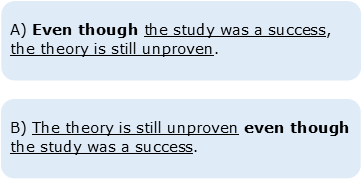

What the above examples demonstrate is that there are two common clause-pattern alternations when using subordinating conjunctions. These are:
Pattern A = subordinating conjunction + dependent clause + comma + independent clause
Pattern B = independent clause + subordinating conjunction + dependent clause
Subordinate conjunctions are particularly useful because they highlight to the reader or listener the importance of the independent clause in relation to its adjoining dependent clause, such as how ‘the theory is still unproven’ is more significant than ‘the study was a success’ in the above. What’s more, subordinate conjunctions are able to offer speakers various meaning relations as outlined in the table below:
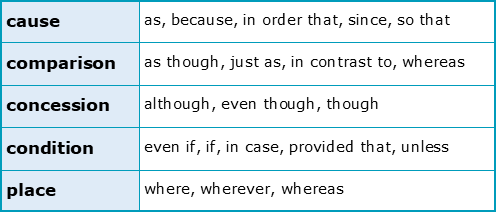
Type 3.2 Temporal Conjunctions
One subtype of the subordinate conjunction is the temporal conjunction. Temporals are identified here as a separate type of conjunction because of their unique time relation and sheer number of words: ‘after’, ‘as long as’, ‘as soon as’, ‘by the time’, ‘long before’, ‘now that’, ‘once’, ‘since’, ‘till’, ‘until’, ‘when’, ‘whenever’ and ‘while’.
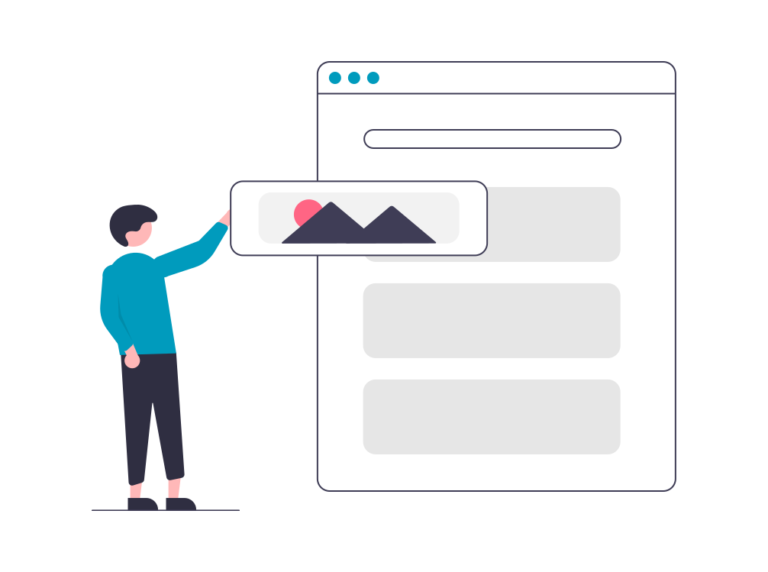
Type 3.3 Complementisers
Another subset of the subordinating conjunction is the complementiser. In English, the three conjunctions ‘that’, ‘whether’ and ‘if’ may be used to join a specific type of dependent clause to an independent clause. This dependent clause is called an object clause because it acts as the object of the main transitive verb. This can be seen in action in the examples below:
Jones (2020) believed that the results would show a positive correlation.
Jones (2020) = subject
believed = verb
that = complementiser
the results would show a positive correlation = dependent clause; object
Jones (2020) argued that there would be an increase in pollution-related illnesses.
Jones (2020) = subject
argued = verb
that = complementiser
there would be an increase in pollution-related illnesses = dependent clause; object
Type 4? Conjunctive Adverbs
The final type we’ve included here is not a conjunction at all but an adverb which is able to function conjunctively. Conjunctive adverbs such as ‘however’ and ‘therefore’ are commonly used in academic writing, introducing sentences, joining independent clauses and expressing a variety of relationships:

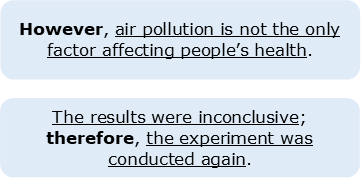
Downloadables
Once you’ve completed all three chapters in this short reader about Conjunctions, you might then wish to download our Chapter Worksheets to check your progress or print for your students. These professional PDF worksheets can be easily accessed for only a few Academic Marks.
Chapter 1 explores the topic: What are conjunctions and how do they function? Our Chapter 1 Worksheet (containing guidance, activities and answer keys) can be accessed here at the click of a button.
Chapter 2 explores the topic: What are the five types of conjunction in English? Our Chapter 2 Worksheet (containing guidance, activities and answer keys) can be accessed here at the click of a button.
Chapter 3 explores the topic: Are conjunctions important in academic writing? Our Chapter 3 Worksheet (containing guidance, activities and answer keys) can be accessed here at the click of a button.
To save yourself 2 Marks, click on the button below to gain unlimited access to all of our Conjunctions Chapter Worksheets. This All-in-1 Pack includes every chapter, activity and answer key related to this topic in one handy and professional PDF.
Collect Academic Marks
-
100 Marks for joining
-
25 Marks for daily e-learning
-
100-200 for feedback/testimonials
-
100-500 for referring your colleages/friends
Once you’ve completed all three chapters in this short reader about Conjunctions, you might then wish to download our Chapter Worksheets to check your progress or print for your students. These professional PDF worksheets can be easily accessed for only a few Academic Marks.